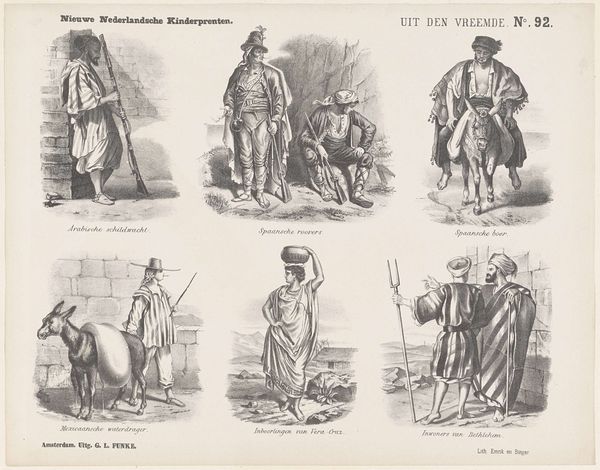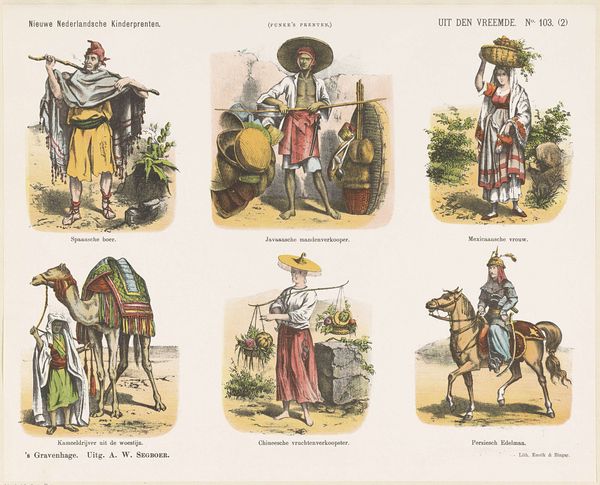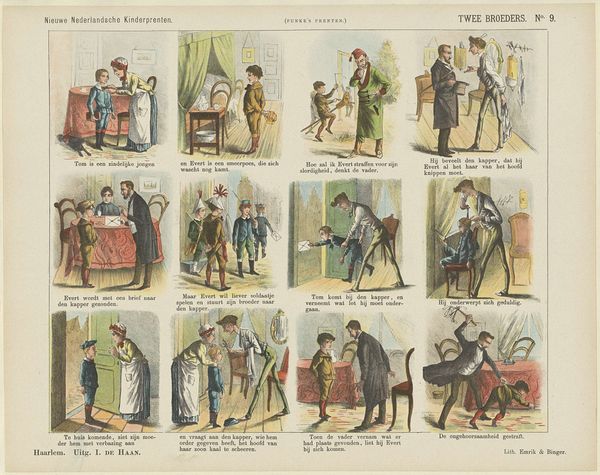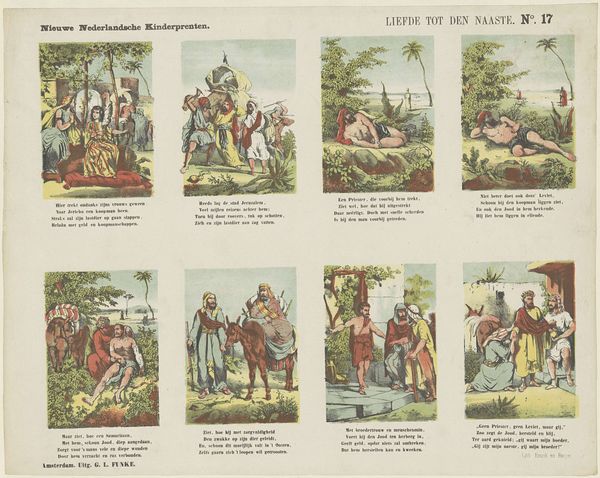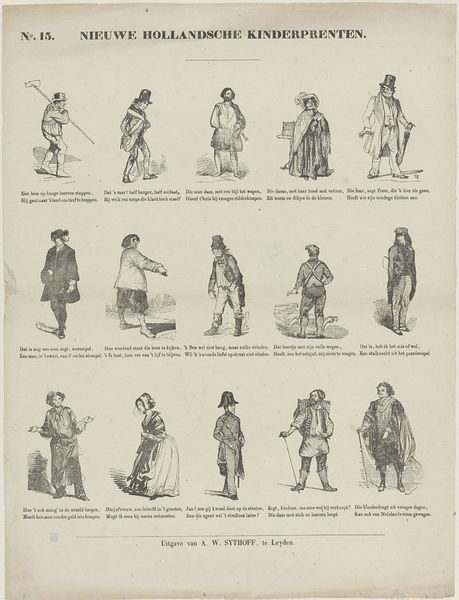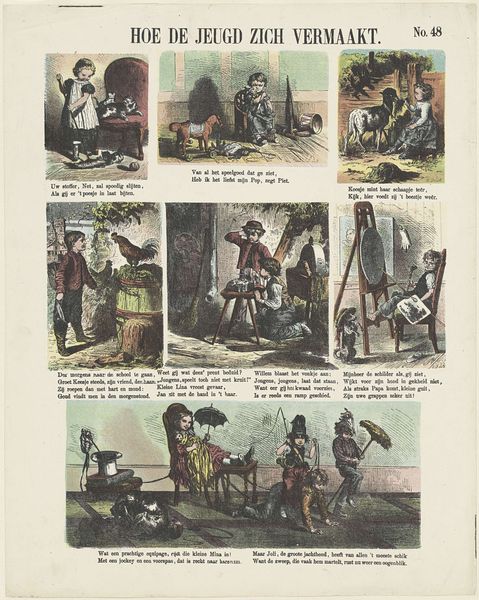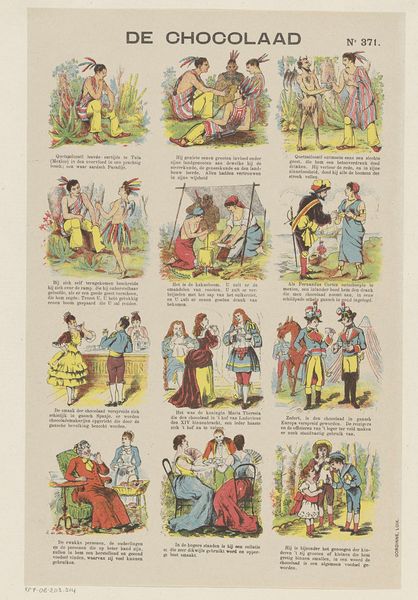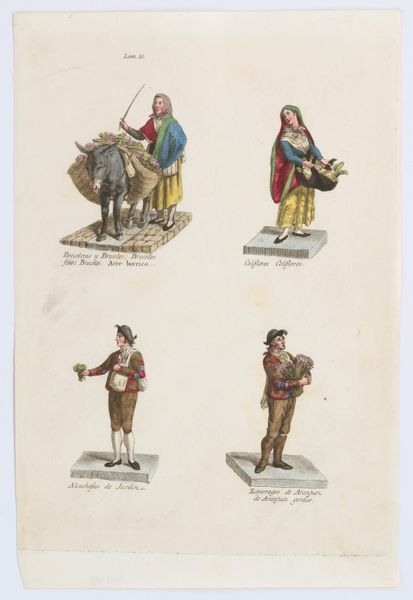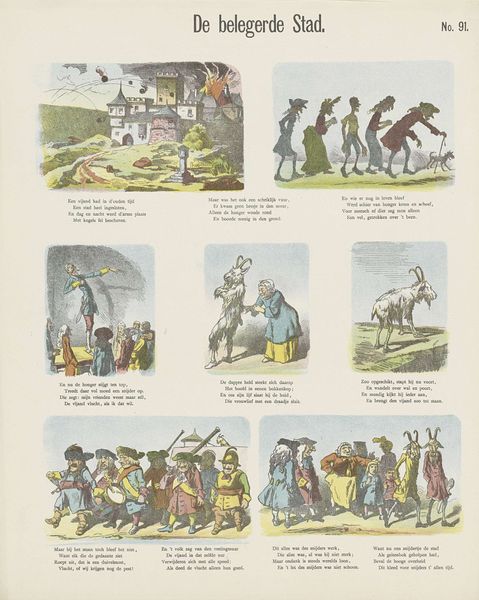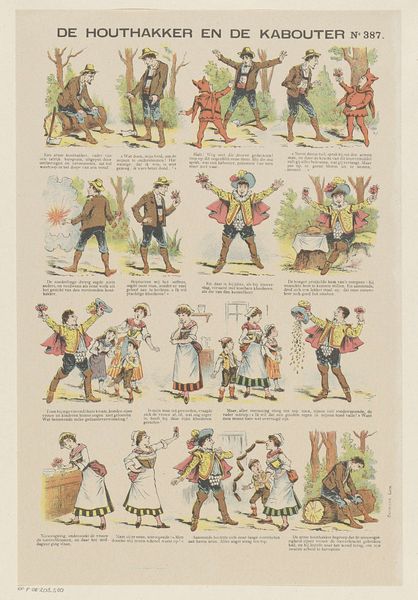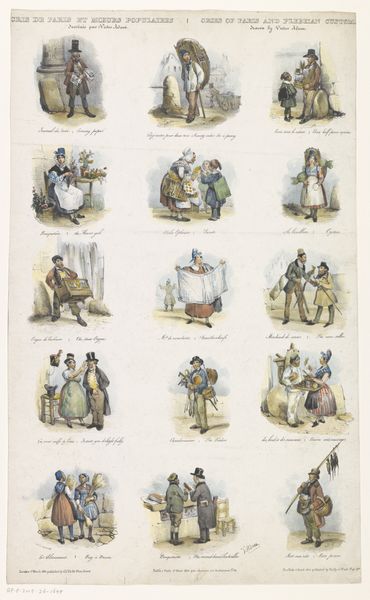
graphic-art, print
#
graphic-art
# print
#
orientalism
#
genre-painting
Dimensions: height 345 mm, width 425 mm
Copyright: Rijks Museum: Open Domain
Curator: Here we have "Uit den vreemde" by Jan de Haan, created between 1875 and 1903. It’s a fascinating print that showcases a variety of genre paintings reflecting an orientalist style. What are your initial impressions? Editor: Wow, what a collection! It's like a postcard from a world I've never seen but somehow feels familiar. The way these figures from different lands are lined up reminds me of a well-organized scrapbook. Each scene feels self-contained, with just enough detail to spark my imagination. Curator: Indeed. Note how de Haan meticulously utilizes line and color to differentiate each figure and setting. The compositional structure emphasizes a grid-like order. Observe, for example, the careful rendering of architectural backdrops. They act as formal containers defining distinct geographical locations. Editor: I see that, and the colors have this soft, almost dreamy quality. I think it pulls me in, creating a sense of nostalgia. They look romanticized—not quite real but more like the idea of those places, almost fictional. What really strikes me is how static everyone seems, it feels less about capturing a dynamic scene, and more a display of human types. Curator: That stasis is intentional. The artist seems to categorize these figures using visual shorthand—distinct costumes and postures denoting specific social roles within what was then perceived as an exotic "other." The layering of visual tropes constructs this sense of 'foreignness.' Editor: Foreignness yes. The kind of foreignness that comes from looking at a snow globe! It's lovely and interesting, but it exists in a completely different universe from lived experiences, it presents such curated image of diversity. Each frame feels carefully placed to stimulate the Dutch curiosity about people far away! Curator: That’s quite insightful. De Haan's approach creates distance while also inviting a form of cultural consumption. A digestible, packaged encounter, one could argue, that subtly reinforces prevailing power structures through the very act of representation. Editor: I'm definitely walking away thinking about the story behind wanting to collect and present people this way! It feels much bigger than these little scenes, it echoes how people see each other, the power behind just looking. Curator: A fitting thought, as we bring our analysis to a close, illustrating just how multifaceted de Haan's seeming innocuous collection really is.
Comments
No comments
Be the first to comment and join the conversation on the ultimate creative platform.
